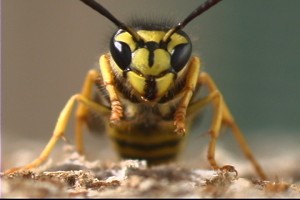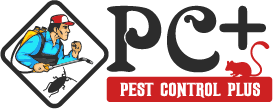No, Yellow jackets do not make honey, but they do drink the nectar of flowers. Read more to get a better understanding.
Yellow jackets belong to the genus vespula. They are stinging insects much like the bees but are gifted with a barbless stinger that enables them to sting multiple number of times unlike the bees. They build paper nests mostly on the ground, though there are a couple of yellow jacket species that build aerial nests like the bald faced hornet and aerial yellow jacket. Yellow jackets are considered as useful insects though they offer potential sting hazards in cases where human activity is high near their nests.
The Answer for your Question:
 Though they belong to the predatory genus, they also consume plant matter. Similar to the honey bees, yellow jackets also feed on nectar of flowers and hence are also considered to be pollinators but are not as effective as the bees. Nectar that is fed on either consumed by the adult or is taken to the nest to feed the larvae and the queen. Yellow jackets do not make honey like the honey bees. It is noteworthy to say that honey bees are the only insects in the world that produce food for human consumption.
Though they belong to the predatory genus, they also consume plant matter. Similar to the honey bees, yellow jackets also feed on nectar of flowers and hence are also considered to be pollinators but are not as effective as the bees. Nectar that is fed on either consumed by the adult or is taken to the nest to feed the larvae and the queen. Yellow jackets do not make honey like the honey bees. It is noteworthy to say that honey bees are the only insects in the world that produce food for human consumption.
Yellow jackets are omnivorous creatures and hence they feed on both animal and plant matter. They are also artful scavengers and can be seen in numbers in picnic spots and garbage cans, hunting for food leftovers. Most yellow jackets become scavengers during the later summer time when their regular food of caterpillar and insects become scarce. They are aggressive when they scavenge for food and hence it is recommended that humans do not get near them when they do so.
Yellow jackets aggressively defend their nest. It is best to look out for underground nests when you mow the lawn or weed the grass during the spring and summer months. They are useful to humans as they help by feeding on agricultural pests and harmful insects. Therefore, it is ideal to let them be as long as they do not pose a threat to humans.
 Yellow Jackets Pest Control Plus helps with control methods and in identifying right Products and Local pest control companies.
Yellow Jackets Pest Control Plus helps with control methods and in identifying right Products and Local pest control companies.